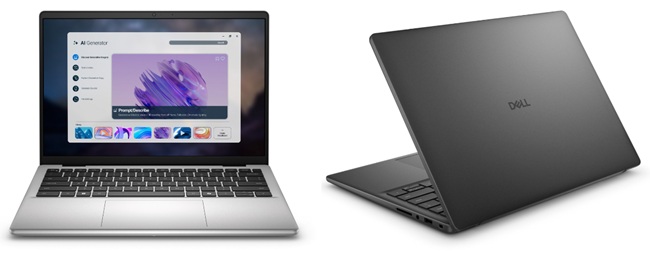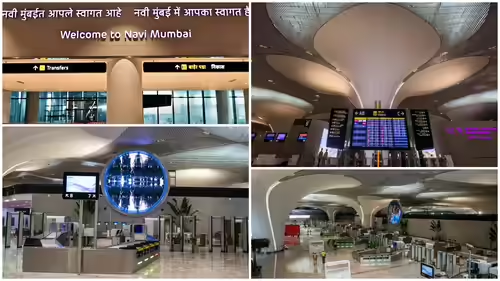With the opening of Navi Mumbai International Airport (NMIA) in December 2025, the Mumbai Metropolitan Region joins a select group of global urban centers—like London, New York, and Tokyo—served by multiple airports. NMIA promises a transformative leap for air travel, distribution of traffic, and convenience for millions. This article examines the first airlines to operate, their initial flight schedules, how departures and arrivals will scale through the next year, and explains the digitized passenger experience and connectivity features.
Table of Contents
The Launch: When and Who Flies First?
NMIA was inaugurated by Prime Minister Narendra Modi in October 2025, with commercial flight operations set to begin around Christmas. The airport’s first phase features a single integrated state-of-the-art terminal capable of handling 20 million passengers annually, and a single runway designed for all modern aircraft. Spread over 1,160 hectares, NMIA is among India’s largest greenfield airport projects.
First Airlines Ready to Operate
The first airlines confirmed for launch day at Navi Mumbai International Airport are:
IndiGo: India’s largest airline will begin with 18 daily departures to over 15 domestic cities.
Air India Express: The low-cost wing of Air India Group kicks off with 20 daily flights connecting 15 destinations nationwide.
Akasa Air: The fastest-growing new entrant will start with 15 daily domestic flights and rapidly expand by mid-2026.
Other airlines, including Vistara and Go First, are expected to join during the ramp-up period in early 2026.
Opening Phase: Daily Flight Schedules and Destinations
During the first operational month (December–January), NMIA will run flights daily between 8 am and 8 pm. The initial runway capacity is set at 8–10 air traffic movements (ATMs) per hour, or approximately 50–60 flights per day (departures plus arrivals). As airlines scale, NMIA will grow to handle 380 flights per day by the end of Phase 1.
Sample Schedule for Launch Month
| Airline | Daily Departures | Initial Destinations |
|---|---|---|
| IndiGo | 18 | Delhi, Bengaluru, Chennai, Hyderabad, Goa, Ahmedabad, Pune, Jaipur, Lucknow, Kolkata, Patna, Kochi, Bhubaneswar, Guwahati, Vizag |
| Air India Express | 20 | Kochi, Trivandrum, Bangalore, Bhubaneswar, Mangalore, Lucknow, Jaipur, Pune, Kolkata, Chennai, Patna, Ahmedabad, Goa, Ranchi, Surat |
| Akasa Air | 15 | Delhi, Bengaluru, Hyderabad, Goa, Ahmedabad, Pune, Jaipur, Lucknow, Kolkata, Patna, Kochi, Bhubaneswar, Guwahati, Vizag |
Route details may be updated as booking opens in October; all current confirmations are from airline press releases and CEO statements.
Expansion and Growth Plans
BY MID-2026
IndiGo: Increasing to 140 daily flights (30 international routes planned by November 2026).
Air India Express: Scaling up to 55 domestic departures (up to 5 international flights daily).
Akasa Air: Over 300 weekly domestic flights and 50 weekly international by summer 2026.
By winter 2026, total daily movements may reach 120 (departures and arrivals), with ticketing portals offering “NMI” as the new IATA code for Navi Mumbai alongside Mumbai’s “BOM” for Chhatrapati Shivaji Maharaj International Airport.
International Connectivity
International flights are expected to commence in the second phase (Q2–Q3 2026), with direct routes to Dubai, Singapore, Colombo, Bangkok, and London under review. Current estimates suggest up to 14 international departures by late 2026.
Full Capacity Operations
When all four planned terminals and two runways open, NMIA’s annual passenger capacity will rise to 90 million, handling up to 40 flights per hour, rivaling top Asian and global airports. Cargo capacity will reach 3.2 million metric tons per year, supporting the region’s logistics network.
Digital Features & Passenger Experience
NMIA leads as India’s first fully digital airport, with:
Automated immigration and baggage drop
Online vehicle parking slot reservations
Gold Line Metro direct connection with Mumbai Airport (approved; to launch in Phase 2)
Water taxi service from Targhar for last-mile connectivity
Multimodal transport links via Atal Setu, Navi Mumbai Metro, and suburban rail.
Smart terminal features include an Automated People Mover system connecting all terminals through underground tunnels, seamless check-in at any terminal, and advanced AI-enabled service desks that minimize queues.
Impact on Regional Aviation
By 2032, combined traffic at NMIA and CSMIA (Mumbai Airport) will surpass 145 million passengers annually—making Mumbai one of the busiest airport regions globally. NMIA’s launch relieves severe congestion at BOM, sets new benchmarks for Indian airport technology, and spurs economic growth in Greater Mumbai, Navi Mumbai, and Maharashtra.
FAQs
Q1: When will commercial flights start from Navi Mumbai Airport?
Commercial operations begin December 2025, with booking opening by late October.
Q2: Which airlines will operate first?
IndiGo, Air India Express, and Akasa Air are confirmed for day one, with departures scheduled to Delhi, Bengaluru, Chennai, Hyderabad, Goa, and more.
Q3: How many flights daily at launch?
50–60 flights per day in the first month, scaling up to nearly 380 per day by Phase 1 end.
Q4: Will NMIA also offer international flights?
International routes begin in the second phase, with Dubai, Singapore, London, and Bangkok routes planned by late 2026.
Q5: How do passengers book flights from NMIA?
Major airline and travel portals will offer “NMI” (Navi Mumbai) in booking menus; final flight lists and times will be confirmed after schedule release in October.
Q6: What are the digital features at NMIA?
Highlights include automated check-in, baggage drop, immigration, people-mover tunnels, online parking, water taxi connectivity, and AI-powered terminals.
Navi Mumbai International Airport ushers Indian aviation into a modern, digital era. With leading airlines offering daily flights to all key cities and soon, global destinations, NMIA promises to reshape the region’s connectivity and set new benchmarks in passenger experience and operational scale. Its phased launch and growth plan will support Mumbai’s rise as a global air hub and inspire airport projects nationwide.












